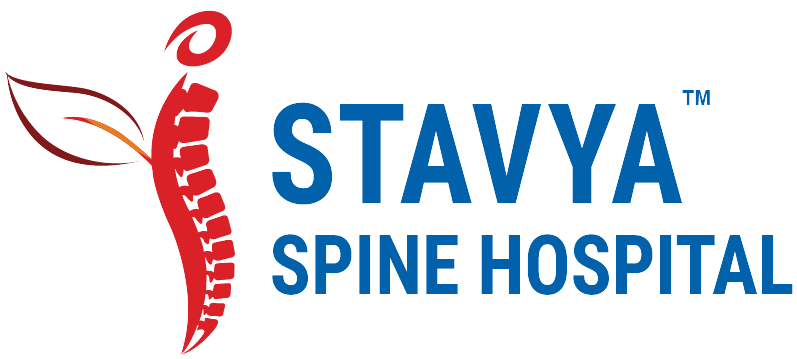Myths & Facts
Paralysis occurs after a spine surgery
Paralysis following spine surgery is actually very rare. It does occur in some types of diseases like Fluorosis and complex spine surgeries, but the percentage of occurrence is far less than what used to be 15 to 20 years back. However, even today it is indeed an intrinsic risk factor that under weighs the benefit percentage of patients. Moreover, the patients who are operated for existent paralysis following fractures are never likely to improve. In such instances surgery is conducted to reduce pain, to make them comfortable and make nursing them easier. These patients and their relatives are always made aware before the surgery why it is being done, yet the general notion persists that surgery is the root cause of their paralysis, thus putting the blame squarely on the surgeon and the spine specialty. In a nutshell, currently due to great advances in technology, advanced trainings, new invented techniques and safe surgery equipment, the chances of paralysis are very less
Backache or neck aches are big diseases.
They are disabling but 80 % of them are non pathological and benign. Most of the backaches don’t even last long. Poor ergonomics, lack of exercise and psychological overlap(stress/low motivation/psychiatric illness) are a very big contributors of back and neck pains.
Complete bed rest for back pain or a disc problem a must.
Not necessarily, unless specially prescribed by the doctor. A patient with a back pain can do everything keeping well within the limitations imposed by his disease.
Patients with backaches must sleep on the Floor. There are specialised beds available which helps and cures backaches.
Not all of it is true. Patient with backaches should lie on a normal bed with a coir mattress that is at least 3 inches wide. High Density u-foam or cotton can also be used in the mattress. Floor sleeping is not recommended.
Back pain occurs after taking spinal anesthesia like in the instance of a C-section in women.
This is certainly a myth. The spinal injection used during a C-section surgery in women does not cause back pain; rather due to the inactive lifestyle of the patient pre and post delivery. In India, women do not exercise during pregnancy or after delivery thereby weakening the muscles. This leads to back pain, which becomes chronic with the addition of obesity.
Tingling and numbness are signs of paralysis.
No. Most often the symptoms of nerve-spinal cord compression starts with a tingling numbness. But 90% of the times they may not even lead to partial paralysis. At the same time,post surgery or conservative treatment courses, disabilities improve and pain reduces significantly depending on the type of disease, but tingling numbness are routine. This is due to the irreversible imprints left on the sensitive nerves. They are distracting but they don’t necessarily increase.
Exercise, yoga and aerobics as shown on television are cures for backaches and neck aches.
All exercises in general are good. But muscle training and strengthening must start from childhood and unfortunately our culture is not sports friendly. One should exercise under the guidance of physiotherapists and doctors especially after middle age. Exercising while in severe pain must be avoided; it is recommended that one starts after the pain comes down and stops if the pain shoots up. Lack of exercise and weak muscles are two of the biggest reasons for mild to moderate nonspecific backaches.
Women suffer backaches the most.
Back pain is seen in both the sexes but women suffer more because of their wrong postures and movements during household activity, hormonal variations and lack of exercise. The social structures of our homes and lack of self-motivation and awareness add to the problem.
Medication leads to weight gain.
Every medicine does not increase weight. There are some medicines which retain water in the body especially steroids and strong painkillers,when taken over a long period of time. Otherwise, weight increases whenever there is decreased physical activity or more consumption of calories.
The screws implanted during the surgery are not compatible and have to be removed.
There is negligible need for the removal of implants. The implants are made of titanium that does not harm our body. They are MRI compatible.
The incision size should always be small.
Yes, ideally, the incision size – cutting of bones tissues- should be kept as small as possible as it is usually in many keyhole surgeries, endoscopy and minimally invasive spine surgeries. But there are many surgeries that are complex and where the size of incision has to be unavoidably big.
The recovery time after a surgery is very long.
No, absolutely not. Most of the patients who do not have profound paralysis of the legs or hands, start walking right from the day after the surgery. Generally, they all are comfortable and ambulatory and are capable of basic self-care activities within a week. Within 3 weeks they can walk short distances with regular, long sitting intervals. Mild climbing of stairs is also possible. Post six weeks,physiotherapy starts with stair-climbing, squatting and sitting cross-legged; soon patients are allowed driving and they can easily resume everyday activities. Patients can lift weights after 2 -4 months of surgery. However, care should be taken to see that the weights are not heavy and are evenly distributed between the two sides and are lifted in an ergonomic way.
Deformities like Scoliosis and Kyphosis (abnormal curvatures of spine) are not to be operated upon or till the child’s growth is complete.
Absolutely not. Earlier the treatment,the better the outcome. Postponing a treatment is riskier and complete correction of the deformity may not be possible.
One spine surgery leads to the next surgery.
No. A single surgery usually addresses the problem in a single shot.There are chances of recurrence of the disorder, but they are very less. It is important to understand that the whole spine is made of multiple vertebra and joints. Like one heart attack due to a block in one of the blood vessels cannot preventdisorder in another blood vessel, spine surgery or treatment to correct disorder in one section of the spine does not mean there cannot be disorders or degeneration in any other part of the spine.
Stem-cell therapy can cure paralysis.
Spinal cord injury (Complete Paralysis)is one of the most devastating of ailments. It has serious consequences and affects the patient and his or her family. Since the nerves are unable to regenerate, there is no recovery from complete paralysis. In such cases, treatment including surgery is to rehabilitate the patient, so that he or she can lead a happy and a maximum functional life from the wheelchair. In desperation, often patients and their families opt for the hi-cost stem-cell therapy but there is no established evidence that it can cure complete paralysis. As per the latest national guidelines for stem-cell research published by ICMR and DBT “any stem cell use in patients must only be done within the purview of an approved and monitored clinical trial(research) with the intent to advance science and medicine, and not offering it as therapy. In accordance with this stringent definition, every use of stem cells in patients outside an approved clinical trial shall be considered as malpractice.”
Covid 19 – A well of wisdom
Dr Mirant Dave (Dr BRD Jr)

